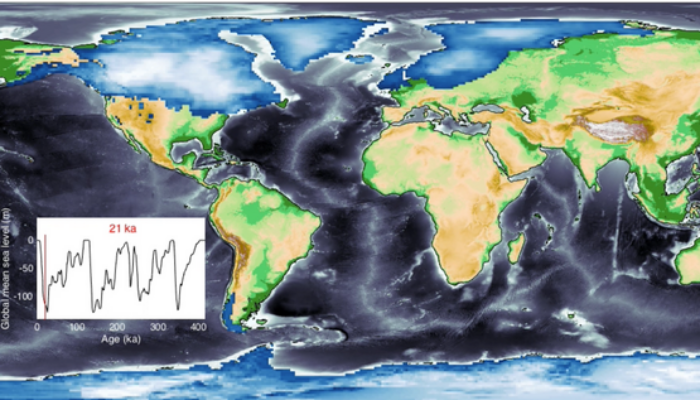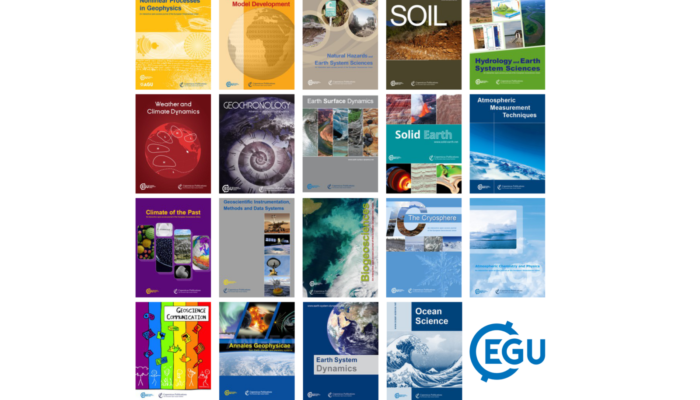Climate change is one of the most urgent problems facing humanity today. Every corner of the planet is already feeling the impacts of climate change, from devastating heatwaves to sweeping floods. The wealthy and powerful are responsible for the lion’s share of greenhouse gas emissions. Yet, the impacts of climate change are disproportionately felt by the poorest and most vulnerable members ...[Read More]
If you didn't find what you was looking for try searching again.
Seismology
Hydro-Seismology: New perspectives on the water cycle in the context of climate change.
With this article, authors Richard Kramer, Charlotte Bruland, Laura Ermert, Yang Lu and Steffen Birk would like to draw your attention to an exciting topic and their EGU 24 session Hydro-Seismology: seismic insights into Water Resources in the context of climate change! Critical Resource – The water cycle under the influence of the climate change The balance of our planet’s eco ...[Read More]
GeoLog
Three peer review myths debunked by the First EGU Peer Review Training
In 2023, EGU offered Peer Review Training for the first time, over three virtual sessions in September and October 2023, with a little homework in between. With more than 100 applications, from which we chose 57, mostly Early Career Scientists (ECS) to fill the available places, the desire for this kind of training in the EGU community was clear. About 80% of the participants completed the trainin ...[Read More]
Seismology
Rotational seismology in short
Always wanted to know the basics of rotational seismology? Follow us into this short blogpost written by our ECS team member Andreas Brotzer. Let’s spin it … or rather rotate it. Most of us enjoy a good spin on a carousel or rollercoaster. Well, we are actually doing this permanently since we live on a rotating planet! Lucky enough, we don’t feel it very much because the rate of rotation is ...[Read More]
GeoLog
GeoPolicy: Science-Policy Pairing Schemes in Europe – a regularly updated list
Pairing schemes are a great way for researchers to learn more about policymaking processes and how science is used in political decision-making! This month’s GeoPolicy Blog post highlights various European-based science-policy pairing scheme opportunities that researchers can apply for. Science-policy pairing schemes provide researchers with the opportunity to gain a better understanding about how ...[Read More]
Geodesy
Calculating postglacial sea-level change within few seconds: a statistical emulator for GIA
Sea-level change serves as a direct indicator of climate change with profound implications for coastal areas. Since 1900, the global mean sea level (GMSL) has risen over 20 cm, leading to beach erosion, delta inundation, and increased flooding worldwide. Over glacial cycles spanning tens of thousands of years, interactions between ocean and continental-scale ice sheets can cause GMSL to fluctuate ...[Read More]
Geodynamics
The Sassy Scientist – Merry Crisis: Spark Lost, Chocolate Found
Congratulations, you resilient academic warrior! You’ve made it through the year without evaporating like a snowflake in July. Now, brace yourself for the gift I’ve carefully curated just for you. Spoiler alert: It’s not a reset button for life, though I’m sure some folks desperately need one. Now, let’s unwrap the gift of wisdom. Leena asks: Sometimes, I feel like I ...[Read More]
Hydrological Sciences
May the year-end be Exceptional, not only hydrologically!
What a hydrological year it has been! From the winter drought and flash floods detailed in Matano and Avanzi‘s blog post to the remarkably warm and wet November 2023, Europe has witnessed a range of extraordinary weather phenomena. In the Alpine region, the convergence of warm and wet weather resulted in numerous rain-on-snow events (see eg. the streamflow recording below), offering valuabl ...[Read More]
GeoLog
GeoRoundup: the highlights of EGU Journals published during December!
Each month we feature specific Divisions of EGU and during the monthly GeoRoundup we put the journals that publish science from those Divisions at the top of the Highlights roundup. For December, the Divisions we are featuring are: Geodynamics (GD), Geomorphology (GM) and Soil System Sciences (SSS). They are served by the journals: Biogeosciences (BG), Earth Surface Dynamics (ESurf), Geoscientifi ...[Read More]
GeoLog
The best Christmas gift you could ask for: how a rare solar event created a once-in-a-lifetime Martian experiment
One of the realities of studying the Earth, planetary or space sciences is that we are attempting to observe an experiment that has been in progress for billions of years, with variables that are most often far outside of our control. Many researchers try to understand these systems by recreating aspects of it, either in analogue experiments or by using simulations, where the variables can be adju ...[Read More]










